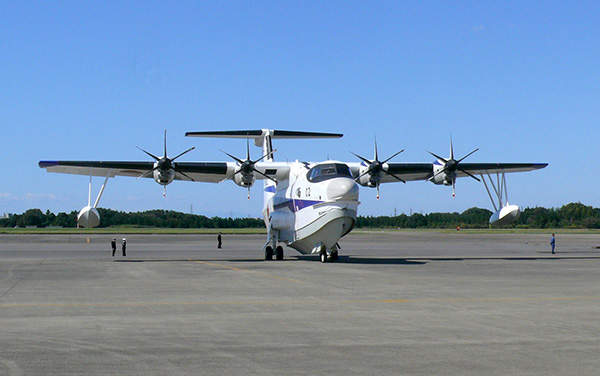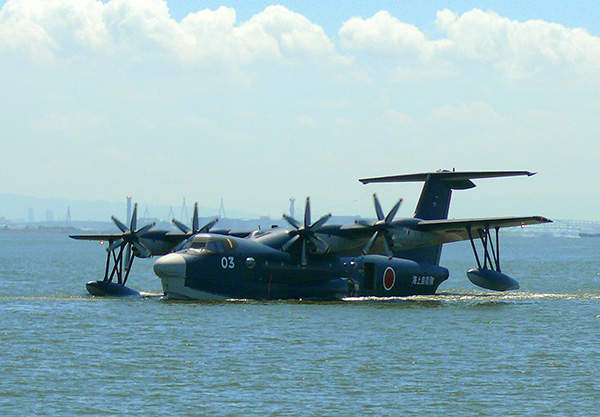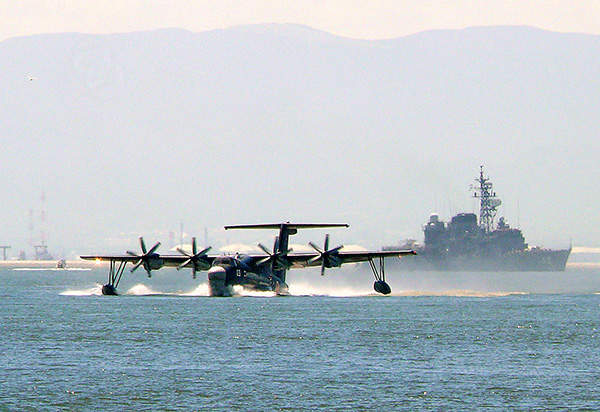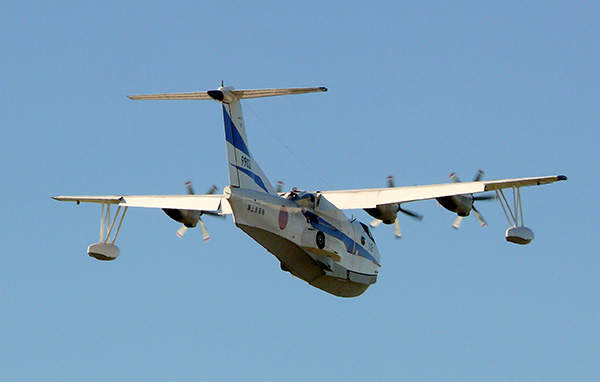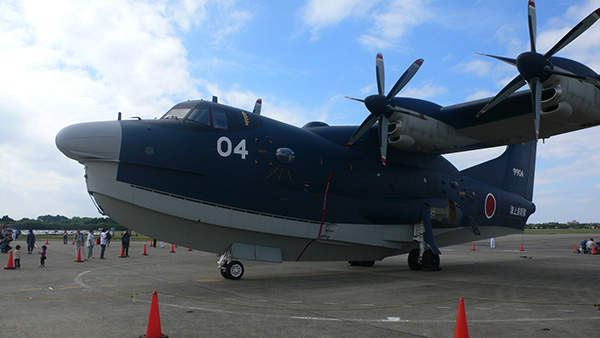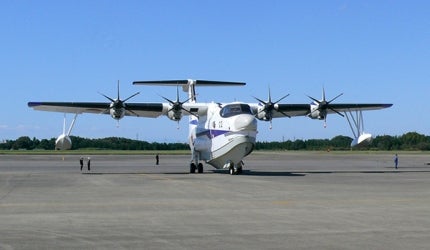
The ShinMaywa US-2 is an amphibious short take-off and landing (STOL) aircraft manufactured by Japan-based ShinMaywa Industries. Designed for air-sea rescue missions, the US-2 is operated by the 31st Fleet Air Wing of the Japan Maritime Self-Defence Force (JMSDF).
The ShinMaywa US-2 fleet is deployed across the remote islands of Japan’s Exclusive Economic Zones to provide surveillance and emergency medical transportation services. The aircraft can quickly reach remote islands and sites of maritime accidents during search and rescue (SAR) operations.
The US-2 amphibian aircraft was displayed at Defexpo India 2012. The aircraft has been offered to India in response to the Indian Navy’s global request for information (RFI) for nine amphibious SAR aircraft. The US-2 is the first Japanese aircraft to be offered to the Indian defence market.
Orders and deliveries
The first US-2 commercial production aircraft was delivered to Japan’s Ministry of Defence (MoD) in February 2009. The fifth US-2 was delivered to the Japan Maritime Self-Defence Force in 2011.
ShinMaywa US-2 development history
In October 1996, ShinMaywa was nominated by the Ministry of Defence as a main contractor to develop advanced version of existing US-1 aircraft. The new aircraft was designated US-1A Kai. ShinMaywa formed a US-1A modification engineering team including Kawasaki Heavy Industries, NIPPI Corporation, and Mitsubishi Heavy Industries. The rigorous engineering requirements imposed on the project resulted in an advanced model which was virtually a brand new aircraft.
The overall assembly of the first prototype was concluded in April 2003 and the first flight test was successfully conducted in December 2003. The first prototype was delivered to the MoD in March 2004, followed by the second prototype in December 2004.
The MoD signed a contract for the delivery of the US-1A Kai aircraft in 2005. The prototype was integrated with partial design changes based on the evaluation by the MoD. The US-1A Kai was re-designated the US-2 STOL Search and Rescue Amphibian, and was formally inducted to a squadron in March 2007. The aircraft entered full-scale production in April 2007 and the first flight was accomplished in December 2008.
Design of ShinMaywa US-2 amphibious aircraft
Related project
Commander Fleet Activities
Commander, Fleet Activities Yokosuka (CFAY) is a US Navy forward deployed base in Yokosuka, Japan.
The US-2 incorporates a flexible airframe design allowing it to be converted into a fire-fighting amphibian, passenger transport aircraft, or a multi-purpose amphibian. The wings and fuselage are made of composite materials. It features a pressurised cabin for high-altitude flights. The STOL technology based on boundary layer control (BLC) helps in very-low-speed operations.
The US-2 has a length of 33.3m, wing span of 33.2m, and a height of 9.8m. The empty weight of the aircraft is 25,630kg. The aircraft can carry up to 20 passengers or 12 stretchers.
Cockpit of the ShinMaywa US-2
The US-2 is equipped with a glass cockpit with integrated instrument panel. A single LCD panel integrates the digitalised meters. The aircraft incorporates fly-by-wire flight control system. The computerised flight system improves the safety and controllability of the aircraft.
Engines and landing gear
The ShinMaywa US-2 is powered by four Rolls-Royce AE 2100J turboprop engines driving six Dowty R414 bladed propellers. Each engine generates a maximum power of 3,424kW. The BLC engine provides a power output of 1,015kW.
The aircraft is equipped with a tricycle type landing gear. The STOL capabilities enable the US-2 to take off and land within very short distances on land and water. The maximum take-off distance required on land is 490m. The spray suppressor and spray strip aboard the US-2 allow the operation in rough seas with wave height of 3m.
Performance
The US-2 aircraft can fly at a maximum altitude of over 6,000m. It has the cruising speed of 480km/h and maximum speed of 560km/h. The maximum range of the aircraft is over 4,500km. The maximum take-off weights of the aircraft on land and water are 47.7t and 43t respectively.
The Global Military Rotorcraft Market 2011-2021
This project forms part of our recent analysis and forecasts of the global military rotorcraft market available from our business information platform Strategic Defence Intelligence. For more information click here or contact us: EMEA: +44 20 7936 6783; Americas: +1 415 439 4914; Asia Pacific: +61 2 9947 9709 or via email.

